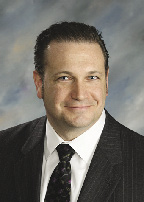You have seen the "green" light and you want to develop a building with a reduced carbon footprint and minimal impacts to the environment. You envision solar panels on the roof and employees with bike helmets in hand. You have admirable goals to harvest rainwater for irrigating, flood the rooms with daylight, and put recycled old-growth hardwood on the floors. You'll install uber-energy efficient HVAC equipment and windows to create a good looking and comfortable work space that improves employee productivity - and the marketing value of the building.
The nationally accepted benchmarking system is the LEED (Leadership in Energy and Environmental Design) Green Building Rating System. The LEED rating system provides a suite of standards for environmentally-friendly and sustainable construction. The certification process provides independent, third-party verification that your building project is an environmentally responsible one. The LEED point system emphasizes green concepts, such as sustainable site selection, energy and water conservation, and the use of recycled and recyclable non-toxic materials. Since LEED started in 1998, over 14,000 building projects totaling over a billion s/f of more energy efficient, lower-impact buildings have been completed.
What's the most cost-effective way to walk the green talk and develop a LEED certified project? The answer is to 1) Integrate LEED concepts into your project from the very inception of your vision and throughout design, construction, and future operation, 2) Build your project team with LEED professionals in various disciplines, and 3) Evaluate the true costs of developing a green project.
Too often, the LEED process is treated as a separate discipline or an external process and isn't considered early enough in the design, engineering and permitting for the project. To effectively incorporate your LEED goals into the project, every member of the team should bring LEED expertise to the table, including the architect, the electrical, mechanical, site/civil engineers, and permitting experts. Not only will this keep the environmental goals of the project at the forefront, it will enhance the exchange of ideas for how the building can be designed to maximize efficiencies and decrease capital and operational costs.
The site selection process should include evaluation of LEED criteria to determine credits that can be achieved before a shovel is put in the ground. The proximity of a building to community resources and transportation routes can earn points toward certification, and local permitting requirements can influence how green concepts are realized in the site and building design. In order to avoid costly rework of the design or re-permitting the project, develop LEED strategies early on in the design.
There are several different categories of costs associated with developing a LEED certifiable building; the capital costs for building energy systems and life cycle analysis; the costs for materials that may have a higher premium due to their uniqueness or availability; and the premium for LEED project administration, including filing documentation with the U.S. Green Building Council to qualify for certification and related fees.
Future savings resulting from the choice of equipment to meet the LEED goals need to be factored into the project's life cycle cost evaluation. Installing high efficiency HVAC, lighting, and domestic hot water systems results in reduced operational energy consumption, which effectively reduces typical equipment payback periods to acceptable terms.
One of the true premiums of obtaining LEED certification is the cost of project administration required by the certification system. However, LEED certification offers advertising value for buildings and building space, and the market will pay a premium to own or work in a LEED certified green building. The enhanced marketability of a LEED certified building can be considered as an offset to added LEED administration costs associated with a green project.
Tighe & Bond is a regional multi-disciplinary firm providing comprehensive engineering and consulting services for a sustainable future, conserving energy and water, minimizing greenhouse gas emissions and waste, and enhancing environmental quality across southern New England. We have numerous LEED APs and experts on staff.
Amy McDonough, LEED AP, is a senior environmental scientist, and Fran Hoey, P.E., LEED AP, is senior vice president and director of real estate development at Tighe & Bond, Inc., Westfield, Mass.
Tags:
Cost effective LEED certification: Getting the most green out of your green
October 14, 2009 - Connecticut










